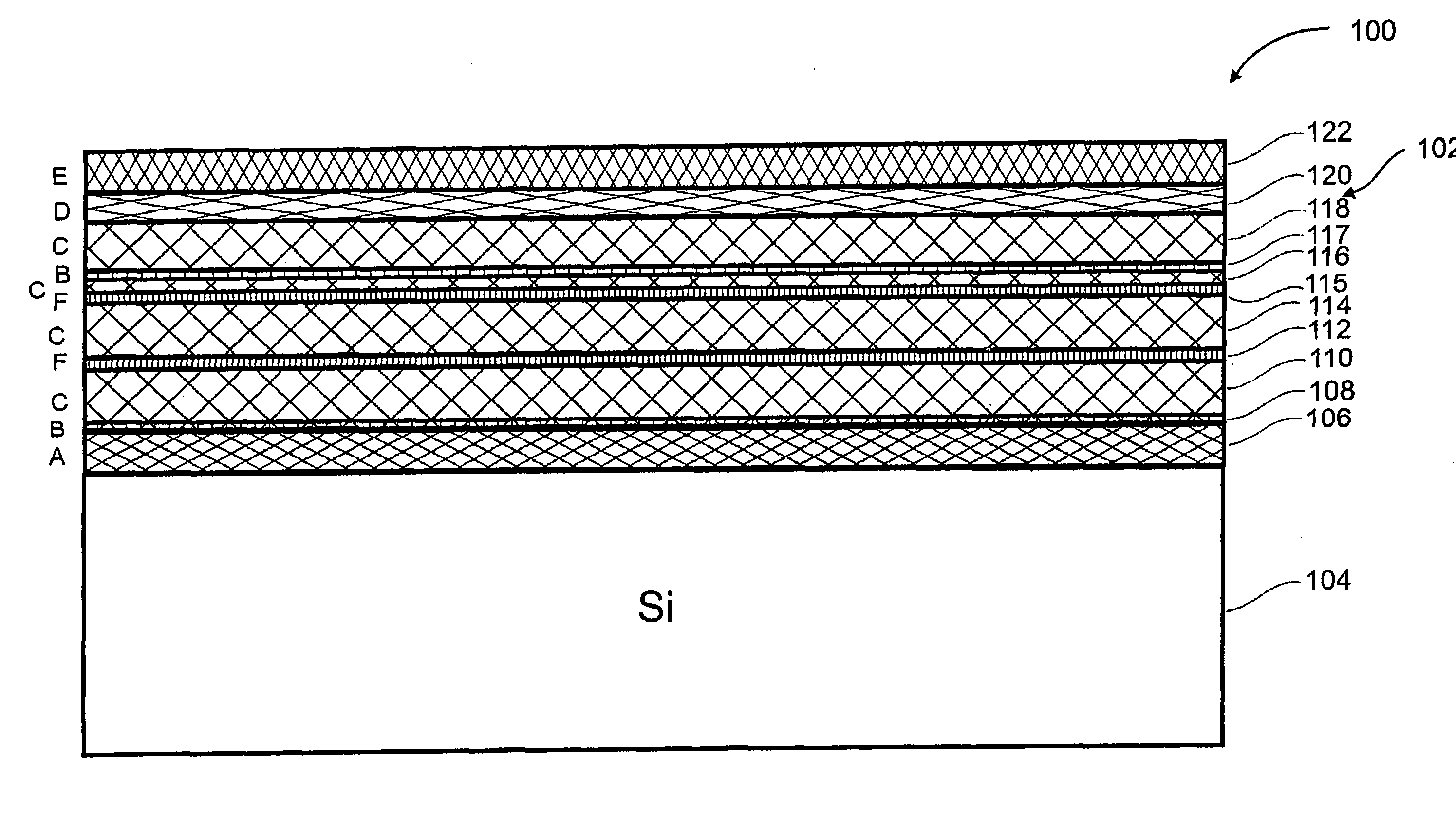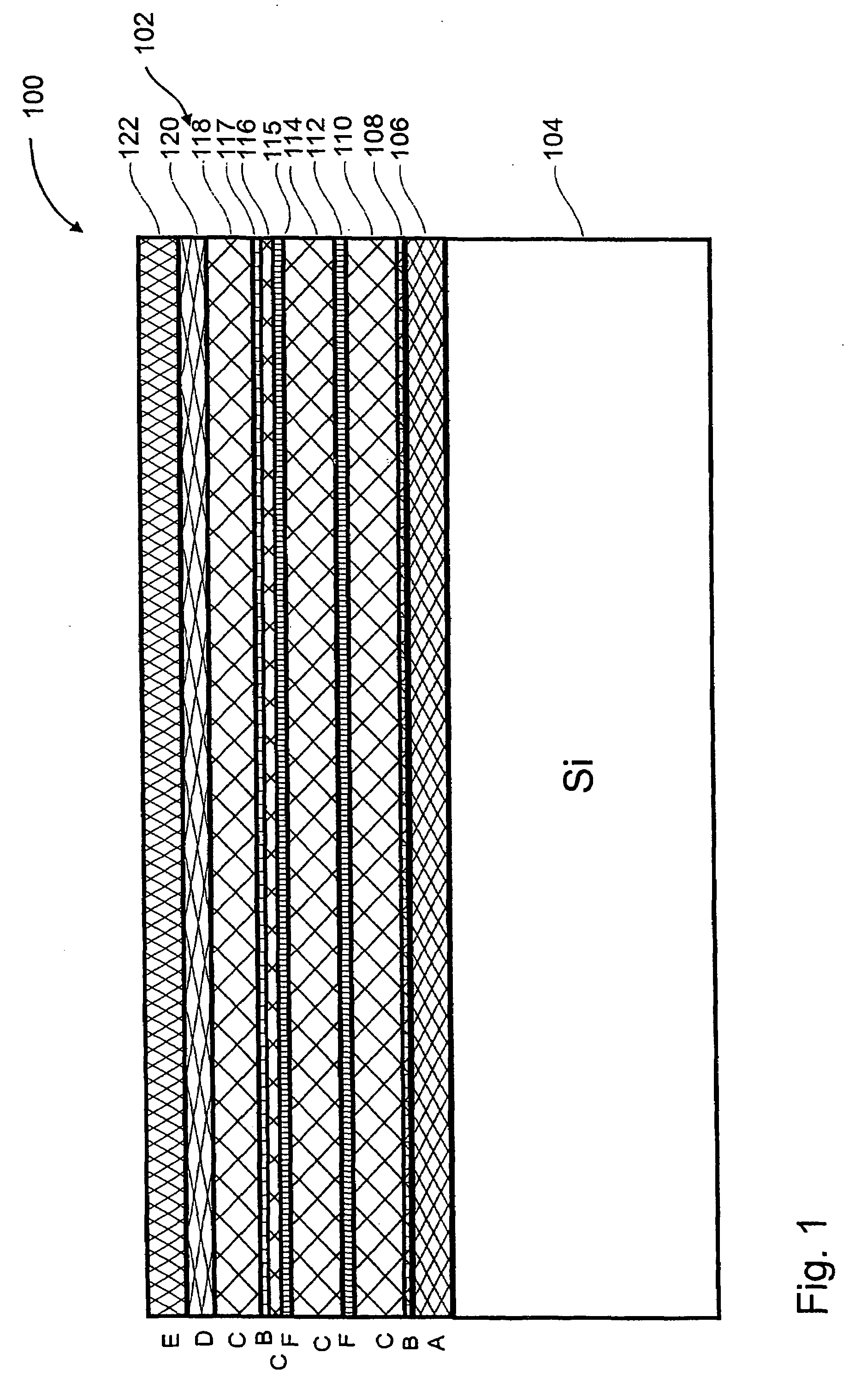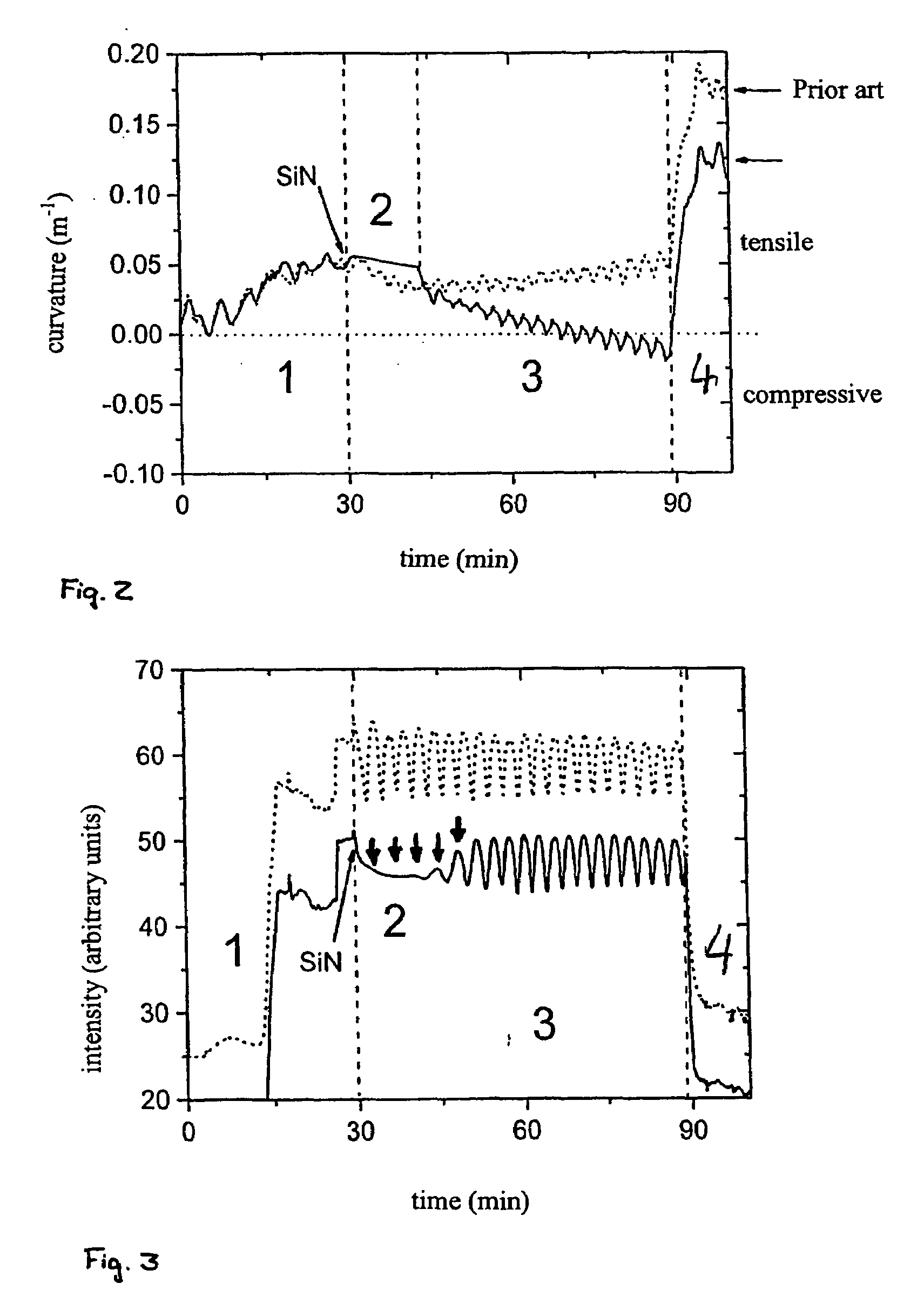Nitride semiconductor component and process for its production
a technology of nitride and semiconductor components, applied in the direction of semiconductor devices, basic electric elements, electrical equipment, etc., can solve the problems of low commercial interest in inexpensive homoepitaxy of layer structure, increased production costs per component, and high dislocation concentration of gan layer on intermediate layer, etc., to achieve high compressive stress, large carrier wafers, and low cost of production
- Summary
- Abstract
- Description
- Claims
- Application Information
AI Technical Summary
Benefits of technology
Problems solved by technology
Method used
Image
Examples
Embodiment Construction
[0106]FIG. 1 shows in a diagrammatic view the layer structure of a nitride semiconductor product 100. The nitride semiconductor product 100 forms an intermediate product in the production of a nitride semiconductor component, as is explained in more detail hereinbelow with the aid of FIGS. 6a)-6f).
[0107]The illustration in FIG. 1 is not true to scale. In particular, the exact ratio of the layer thicknesses of the individual illustrated layers to one another cannot be determined from the figure. The layer thickness relationships shown in the figure thus provide only a fairly rough starting point. In the following description process aspects are discussed in parallel to device aspects on account of the lack of detail of the illustration.
[0108]The nitride semiconductor product 100 contains a layer structure 102 on a silicon wafer 104. The employed growth surface of the wafer, which is perpendicular to the plane of the paper of FIG. 1, is a (111) silicon surface. Instead of a silicon wa...
PUM
| Property | Measurement | Unit |
|---|---|---|
| surface area | aaaaa | aaaaa |
| thickness | aaaaa | aaaaa |
| thickness | aaaaa | aaaaa |
Abstract
Description
Claims
Application Information
 Login to View More
Login to View More - R&D
- Intellectual Property
- Life Sciences
- Materials
- Tech Scout
- Unparalleled Data Quality
- Higher Quality Content
- 60% Fewer Hallucinations
Browse by: Latest US Patents, China's latest patents, Technical Efficacy Thesaurus, Application Domain, Technology Topic, Popular Technical Reports.
© 2025 PatSnap. All rights reserved.Legal|Privacy policy|Modern Slavery Act Transparency Statement|Sitemap|About US| Contact US: help@patsnap.com



